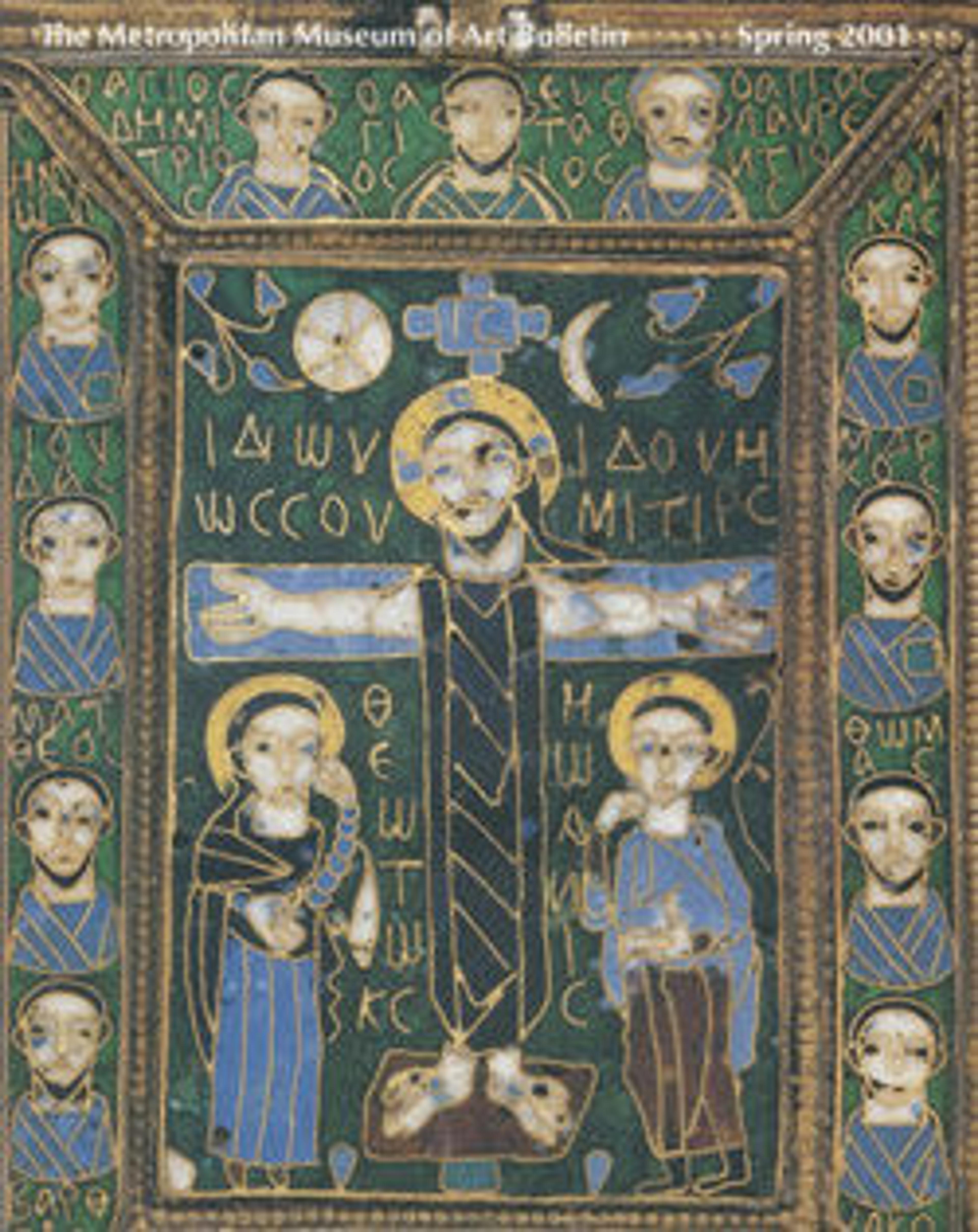Fragment of a Lintel
The deeply carved decoration on this fragment resembles that on the door and window frames of early monumental churches in Syria. The symbol that divides the central roundel was understood as both a cross and a Christogram, the monogram for Christ's name formed from the first two letters of his name in Greek, chi (X) and rho (r). The alpha (A) and omega (w) that flank the cross, the first and last letters of the Greek alphabet, were widely used by Christians as symbols of the eternal nature of God. Their use was inspired by John the Evangelist's vision on the isle of Patmos (Revelation 1:8): "I am the Alpha and the Omega, says the Lord God, who is and who was and who is to come, the Almighty."
Artwork Details
- Title: Fragment of a Lintel
- Date: 400–550
- Geography: Made in possibly Syria
- Culture: Byzantine
- Medium: Limestone
- Dimensions: Overall: 20 x 19 1/2 x 7in. (50.8 x 49.5 x 17.8cm)
- Classification: Sculpture-Architectural
- Credit Line: Purchase, Anonymous Gift, 1969
- Object Number: 69.15
- Curatorial Department: Medieval Art and The Cloisters
More Artwork
Research Resources
The Met provides unparalleled resources for research and welcomes an international community of students and scholars. The Met's Open Access API is where creators and researchers can connect to the The Met collection. Open Access data and public domain images are available for unrestricted commercial and noncommercial use without permission or fee.
To request images under copyright and other restrictions, please use this Image Request form.
Feedback
We continue to research and examine historical and cultural context for objects in The Met collection. If you have comments or questions about this object record, please contact us using the form below. The Museum looks forward to receiving your comments.
